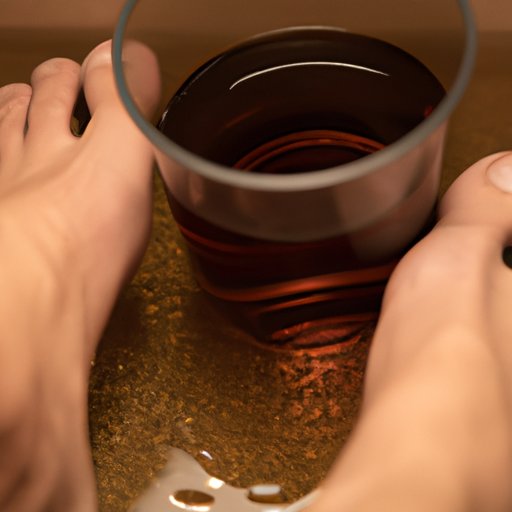Introduction
Restless legs syndrome (RLS) is a neurological disorder that causes an irresistible urge to move your legs. It is often worse at night, making it difficult to fall asleep. Symptoms include tingling, burning, or itching sensations in the legs, as well as an urge to move them.
Exercise Regularly
Regular exercise can help reduce the severity of RLS symptoms. Exercise increases blood flow in the body, which helps to reduce muscle tension and improve overall circulation. Exercise also releases endorphins, which can help reduce stress and anxiety.
To get the most benefit from exercise, try doing moderate-intensity activities such as walking, swimming, or cycling for at least 30 minutes a day, three times a week. Yoga and stretching are also great ways to reduce muscle tension and promote relaxation.

Take a Warm Bath or Shower
A warm bath or shower can be very relaxing and can help relieve the symptoms of RLS. The warmth of the water helps to relax the muscles and reduce tension. The suggested temperature is between 95-105°F (35-40°C). For best results, take a warm bath or shower for at least 20 minutes before bedtime.
Stretch Before Bed
Stretching can help reduce tension in the body and can also help reduce the symptoms of RLS. It is important to focus on deep breathing while stretching, as this can help to reduce stress and anxiety. When stretching, focus on the calves, hamstrings, and quadriceps, as these are the areas most commonly affected by RLS.
Avoid Caffeine and Alcohol
Caffeine and alcohol can both aggravate the symptoms of RLS. Caffeine is a stimulant that can make it harder to relax and fall asleep. Alcohol can also interfere with sleep and can worsen RLS symptoms. To avoid these substances, try drinking herbal teas, decaf coffee, or non-alcoholic drinks instead.
Massage Your Legs
Massaging your legs can help to reduce tension and relax the muscles. Massage can also help to stimulate circulation and release endorphins. Try using firm circular motions on the calves and thighs, or use a rolling pin to roll over your legs. Alternatively, you can use a foam roller to work out any knots or tightness.

Apply Heat or Cold to Your Legs
Applying heat or cold to your legs can help to reduce pain and discomfort caused by RLS. Heat relaxes the muscles and increases circulation, while cold can help to reduce inflammation and numb the area. Use a heating pad or hot water bottle on the affected area for 10-15 minutes, or apply an ice pack for 15-20 minutes.
Try Relaxation Techniques such as Meditation or Yoga
Relaxation techniques such as meditation or yoga can help to reduce stress and anxiety, which can in turn reduce RLS symptoms. Meditation can help to clear your mind and relax your body, while yoga can be used to stretch and strengthen your muscles. Both of these activities can help you to get a better night’s sleep.
Conclusion
Restless legs can be a frustrating condition, but there are steps you can take to reduce its symptoms. Regular exercise, taking a warm bath or shower, stretching, avoiding caffeine and alcohol, massaging your legs, applying heat or cold, and trying relaxation techniques can all help to reduce the symptoms of RLS and improve your sleep. If your symptoms persist, it is important to speak to your doctor for further advice.


